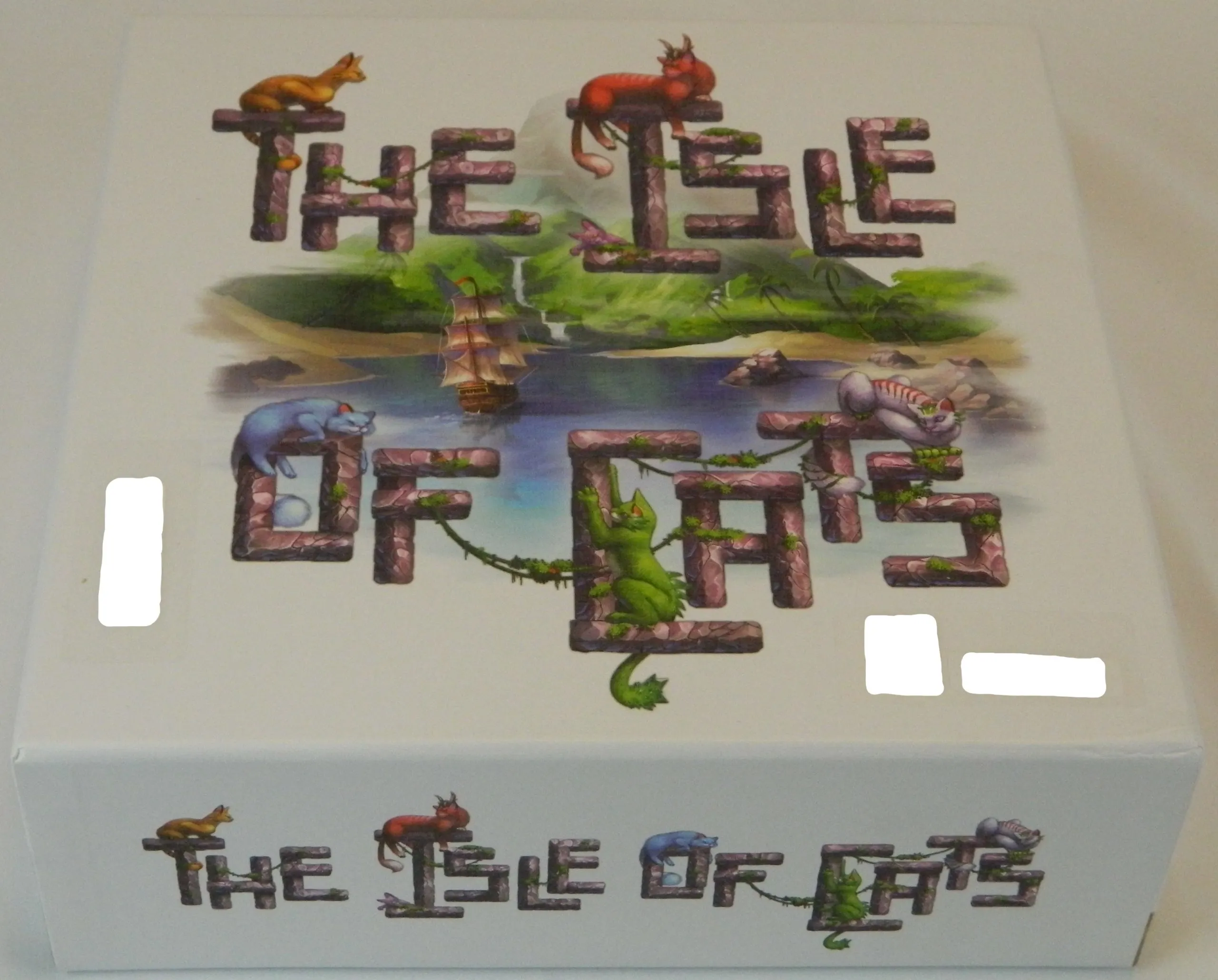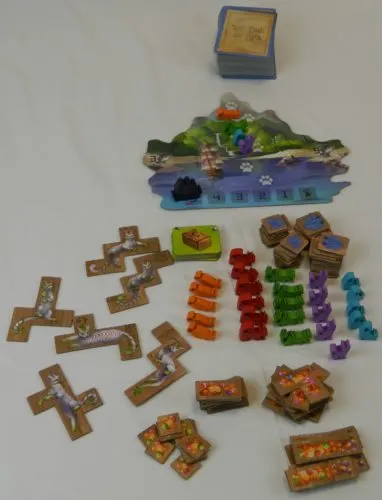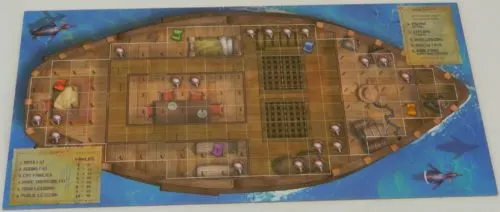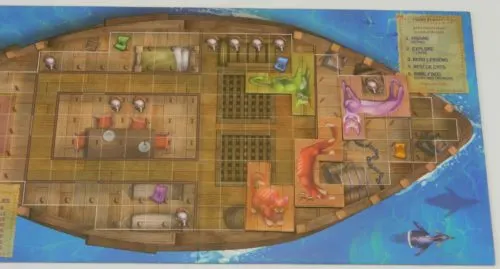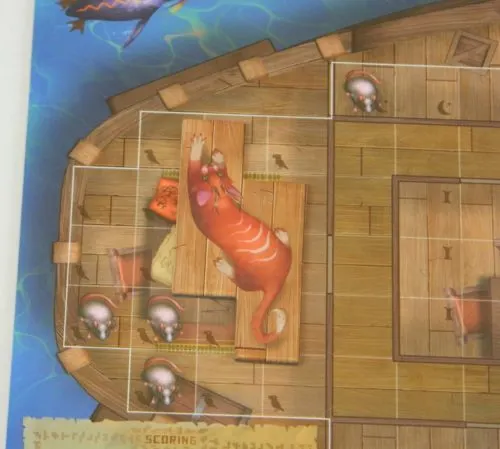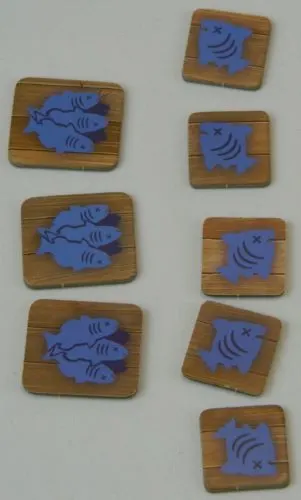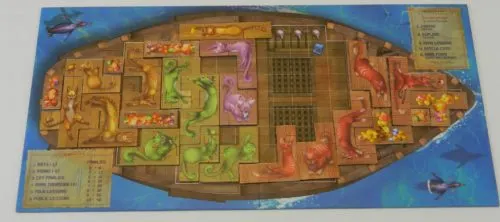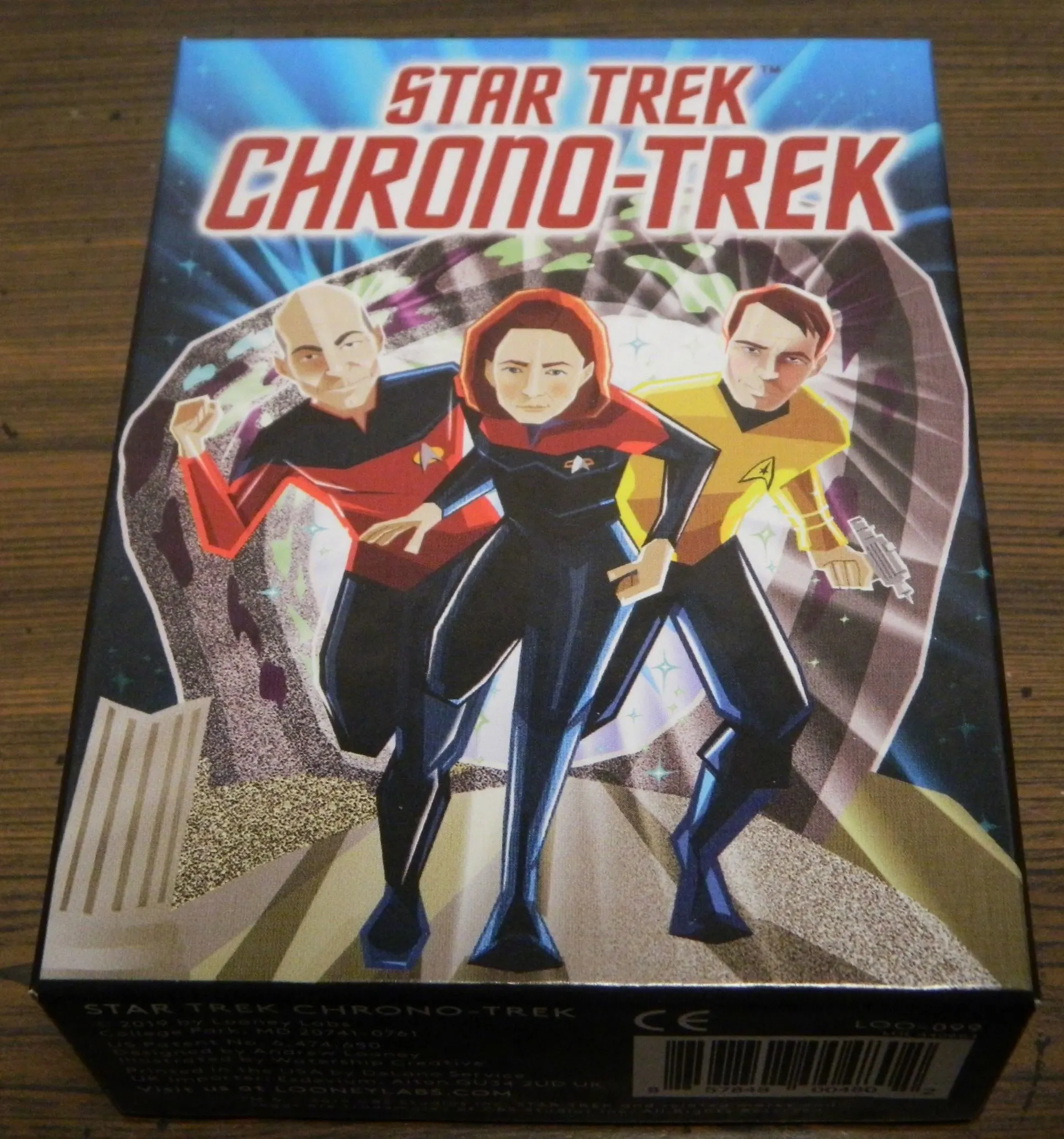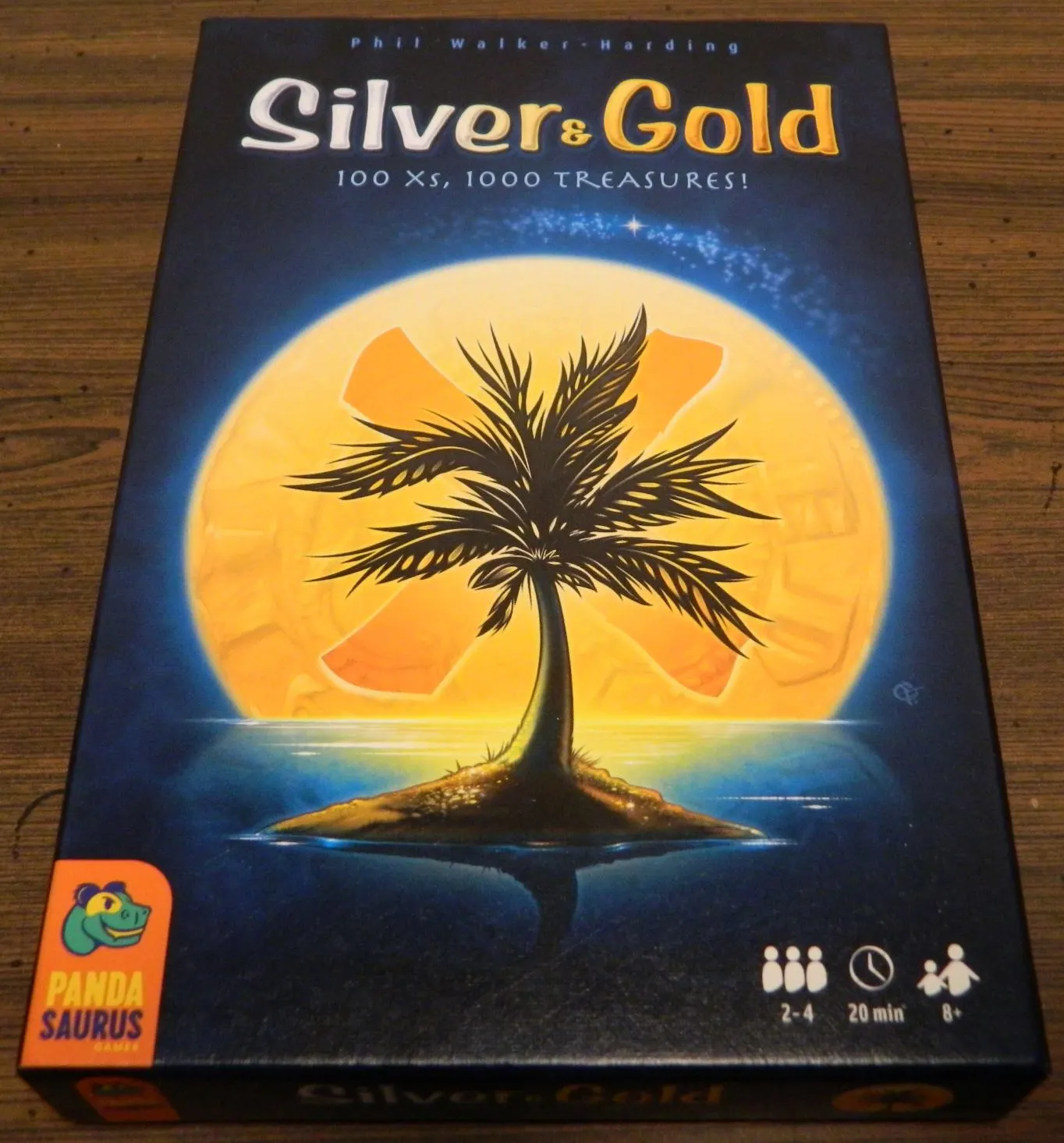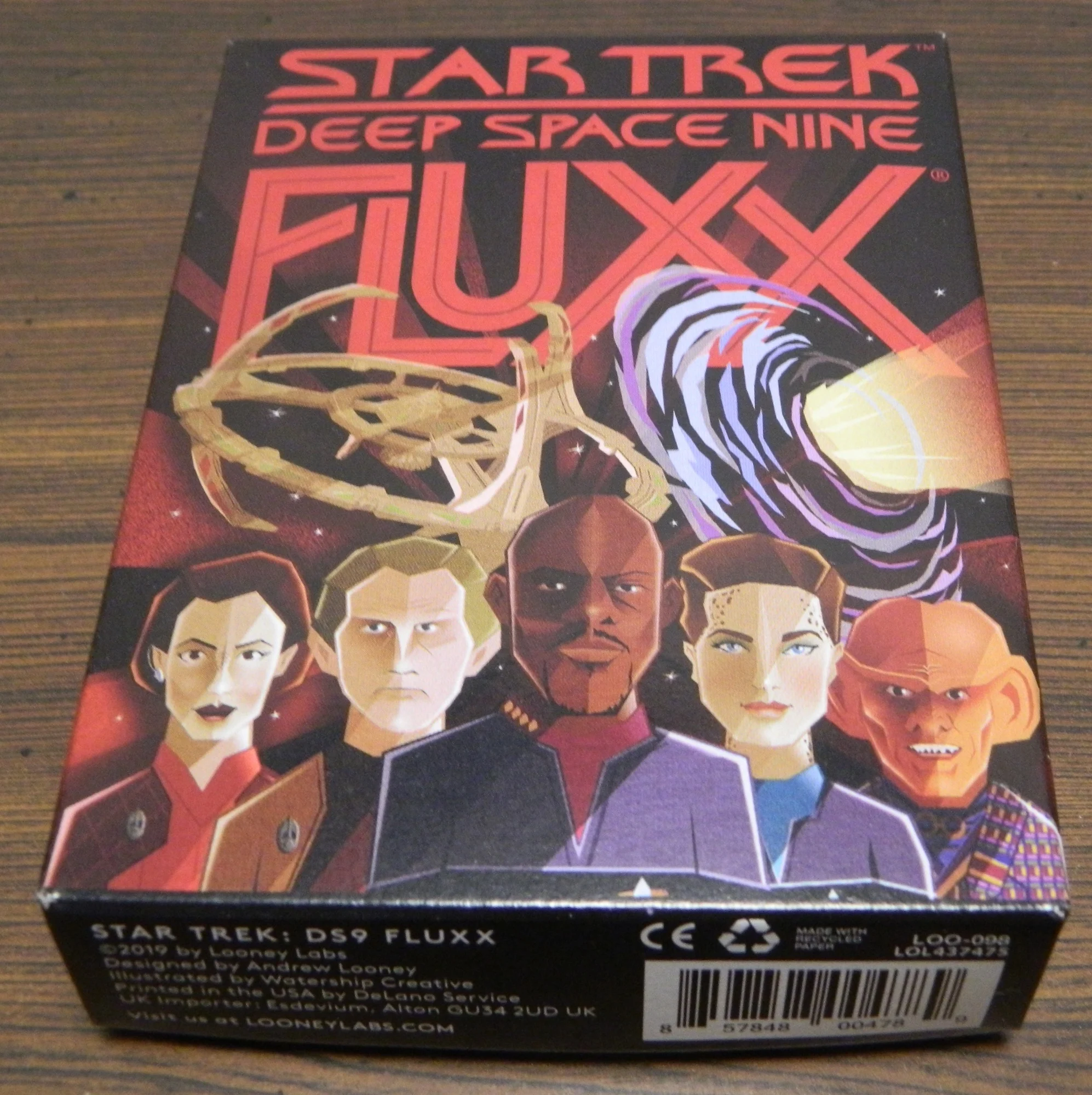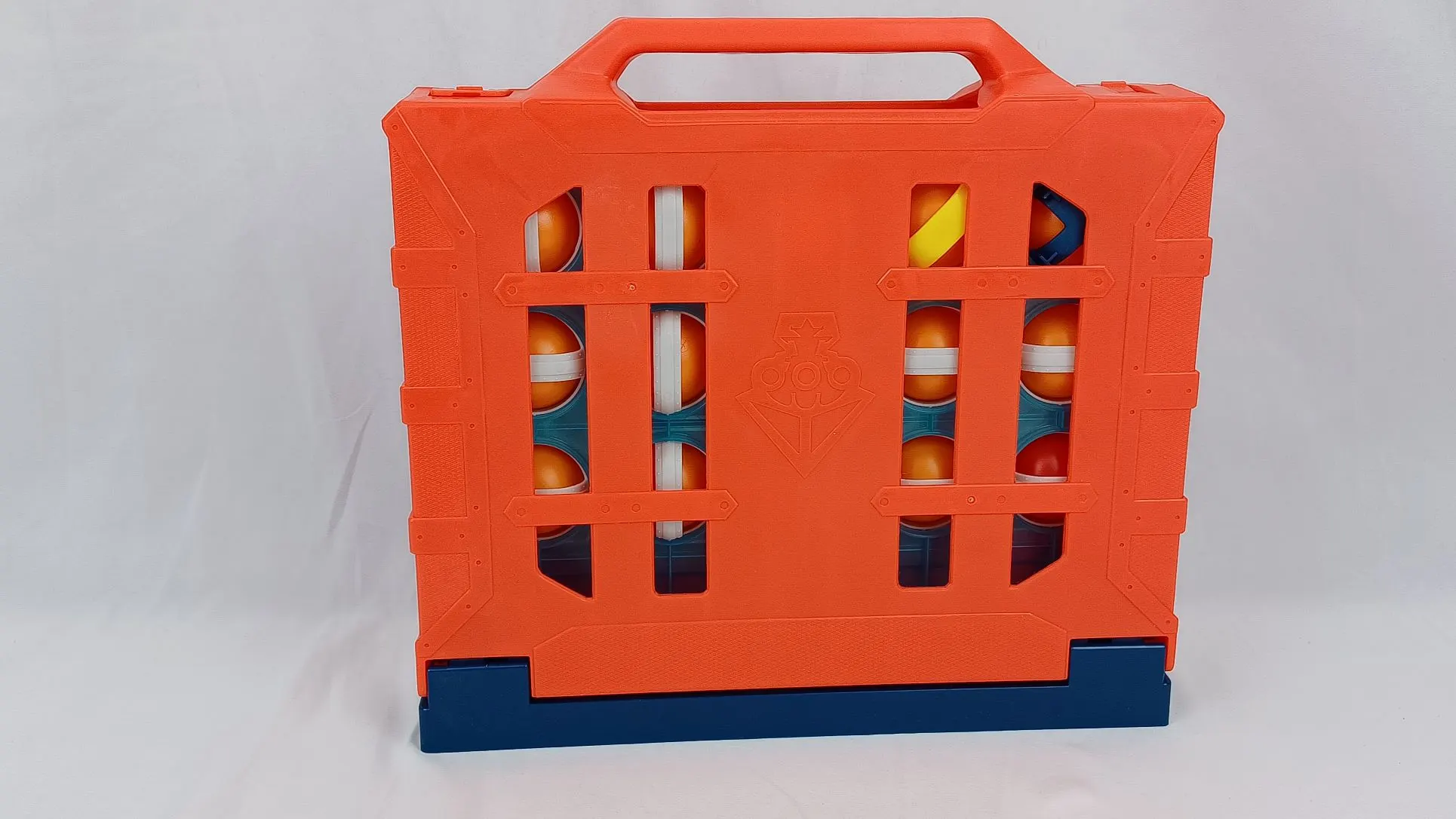Regular readers of Geeky Hobbies will probably already know that two of my favorite board game genres are tile placement and card drafting. What I enjoy most about these two genres is that they usually do a good job of mixing accessible gameplay mechanics with enough strategy that you can have a real impact on the outcome of the game. While the two genres have similar elements, they are different enough that I never really thought I would find a game that actually utilized both. Well it turns out that there is such a game. Today I am looking at The Isle of Cats which was one of the highest rated games of 2019 that actually tried to combine these two wildly different genres. The Isle of Cats is not quite perfect, but it succeeds at combining tile placement and card drafting mechanics into a highly original and engaging game that the whole family can enjoy.
How to Play The Isle of Cats
Setup
- Place the island board in the center of the table with the orange cat side face up.
- Place the Vesh’s boat token on the five space of the island board.
- You will place a number of common treasure tiles on the table based on the number of players. These tiles should be placed below the island board.
- 1-2 players – Five tiles of each type
- 3 players – Eight tiles of each type
- 4 players – Eleven tiles of each type
- Place the six Oshax tiles below the island board.
- Sort the fish tokens by their value. Place these fish tokens along with the wooden cats to the side of the board to form the supply.
- Shuffle the discovery cards and place them in a face-down pile
- Place the permanent basket tokens below the island board. Each player takes one permanent basket token for themselves.
- Insert all of the cat and rare treasure tiles into the discovery bag. Place the discovery bag where all of the players can reach it.
- Each player takes a random boat board and turns it to the orange cat side.
- You will randomly choose who will be the first player. Each player chooses one of the wooden cats to represent their color. They will place this figure on the island board with the first player placing their figure at the top of the island.
Boats
Each player’s boat is divided into seven different rooms. Each room is indicated by a small symbol in one of the corners of each square.
For some of the cards certain terms will be used in relation to the board.
- Rows are a line of squares that run from the left to right side of the board.
- Columns are a line of squares that run from the top to the bottom of the board.
- The edge of the boat includes all spaces that touch the white line that goes around the outside of the boat.
- Things are only considered to be touching if they share an edge. Diagonals are never considered to be touching.
Tile Placement
Throughout the game players will be acquiring cat and treasure tiles. When a player acquires a tile they will have to immediately place it on their boat. If a player cannot fit a tile on their boat, they cannot acquire it.
The first tile that each player acquires can be placed anywhere on their boat as long as they follow the placement rules. Every tile after the first must be placed adjacent (not diagonal) to a tile that the player has already added to their boat.
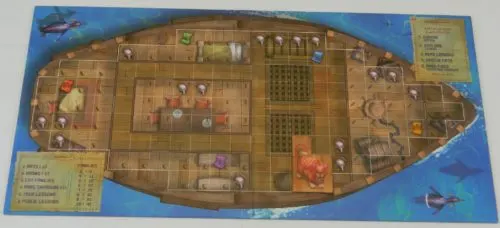
This player has placed the first tile on their board. Every tile acquired after this one will have to be attached to one of the tiles already on the board.
When placing tiles the following rules must be followed:
- Tiles can be rotated or flipped in any way before they are placed.
- Once a tile has been placed it cannot be moved for the rest of the game.
- Two tiles may never overlap one another.
- All tiles must fit within the player’s boat. Each tile must line up with the squares printed on the boat.
- While the ship is broken up into rooms, tiles may be placed between rooms and can be even placed on top of a wall.
- A player can always place a tile on top of a space that features a treasure map. If the player plays a cat tile that matches the color of the treasure map though, they will get to take a common treasure and add it to their ship.
Playing the Game
Each game of Isle of Cats is played over five rounds. Each round consists of seven phases:
- Setup
- Fishing
- Exploring
- Reading Lessons
- Rescuing Cats
- Finding Treasure
- Cleanup
Setup
Each round begins with the start player setting up the next round. They will draw a number of tiles from the discovery bag based on the number of players.
- 2 players – Eight cat tiles
- 3 players – Twelve cat tiles
- 4 players – Sixteen cat tiles
Half of the drawn tiles will be placed in the left field (the space left of the island board) and the other half will be placed in the right field (the space right of the island board).
If any rare treasure tiles are drawn from the discovery bag, they will be placed next to the common treasure. Another tile will be drawn from the bag to replace the rare treasure tile.
Fishing
Each player will take fish tokens equal to 20 fish from the supply. The fish tokens come in one and five increments.
Exploring
The exploring phase consists of two steps: Selecting Discoveries and Accessing Discoveries.
Selecting Discoveries
To begin the exploring phase the start player will deal seven cards face-down to each player.
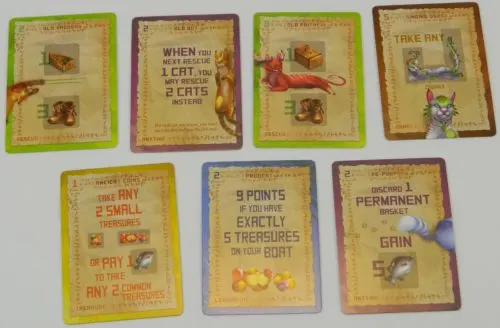
These are the seven card dealt to this player. The player will get to chose two of the cards to keep. They will pass the rest of the cards to the next player.
Each player will pick up their seven cards and look at them. They will choose two of the cards that they would like to keep, and they will pass the rest of the cards to the next player. In rounds/days 1, 3 and 5 cards should be passed clockwise. In rounds 2 and 4 the cards should be passed counter-clockwise.
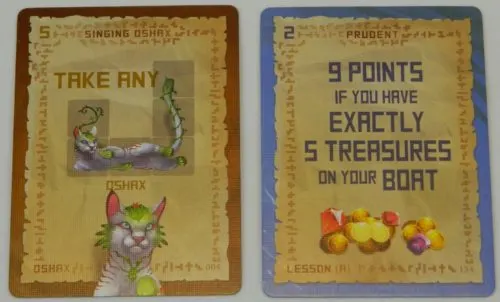
This player chose these two cards from the first seven cards that they were dealt. The rest of the cards were passed to the next player.
After everyone has passed their five remaining cards, each player will look at the cards that were passed to them. They will choose two of these cards to add to the two they kept previously. They will then pass the remaining cards in the same direction.
The players will then choose two of the final three cards. The remaining card from each hand will be passed one last time to the next player who will add it to the other cards that they took.
Accessing Discoveries
After the players have drafted their seven cards for the round, they will have a choice of which of the cards that they would like to keep. Each of the cards has a number written on it in the top left corner. This number indicates the cost in fish for keeping the card.
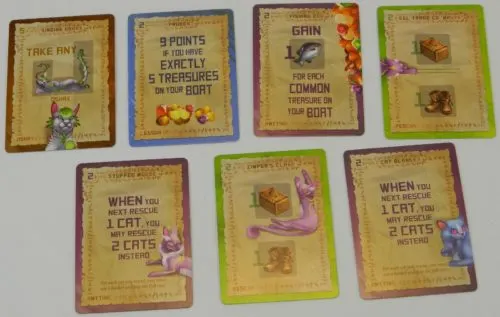
Here are the seven cards that this player chose from the cards that were passed to them. They will now have to choose which cards they would like to keep and pay for.
Each player will choose which cards they would like to keep and will pay the corresponding amount of fish to the supply. Any cards that a player chooses not to purchase will be added to the discard pile.
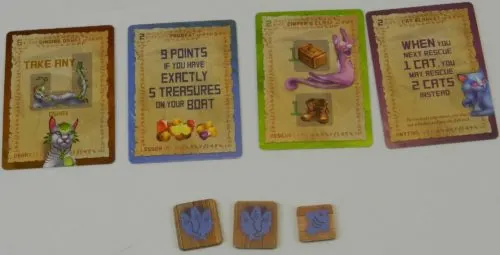
This player chose to keep four of their cards. The cards cost 5, 2, 2, and 2 fish. They paid a total of eleven fish for these four cards.
Reading Lessons
In this phase players will use the cards that they kept that feature a blue border. Each player must play all of the lesson cards that they have in their hand.
Public lesson cards will be placed face up in the middle of the table so everyone can see them. Public lesson cards are identified by text written on the bottom of the card. All public lesson cards belong to all of the players. These public lesson cards will potentially score all of the players extra points at the end of the game. If a color has to be chosen for the card, the person who plays the cards will get to pick the color and place the corresponding wooden cat figure on the card.
All lesson cards that aren’t public will only belong to the player who plays them. Each player will place all of these cards from their hand into a face down pile next to them. The cards should be placed so other players can count them. The other players should never see what is printed on the cards though. These cards will only score points for the player who played them at the end of the game.
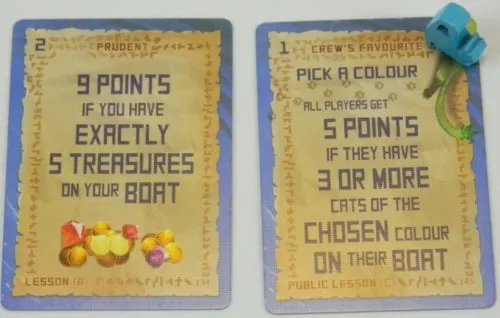
Here are two different lesson cards.
The card on the left is a lesson card that only applies to the player who plays it. The player that acquires it can score nine points if they have exactly five treasures on their boat.
The card on the right is a public lesson. The player who played it chose blue for the cat color. All of the players have the opportunity to score five points if they have three or more blue cats on their boat.
Rescuing Cats
At the start of the phase all of the players in turn order will choose which rescue cards (green border) that they will use. They will place their chosen cards face down on the table. Once all of the players have chosen which cards they will play, the cards will be revealed.
Players will first determine turn order for the rest of the round by comparing the speed of the cards that they played. Each card that is played will feature a boot symbol and a number. This symbol indicates how much the card adds to a player’s speed.
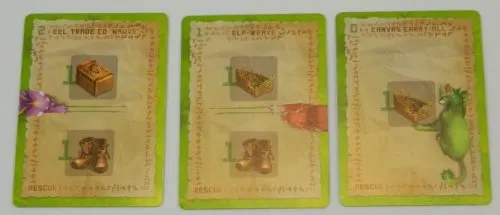
This player played three rescue cards. As the cards feature two boots, they will compare this total to the boots played by the other players.
The player with the most speed will place their chosen wooden cat figure at the top of the island to indicate that they are the start player. This will continue with the rest of the players. If two players have the same speed they will maintain the same order between them as the previous round.
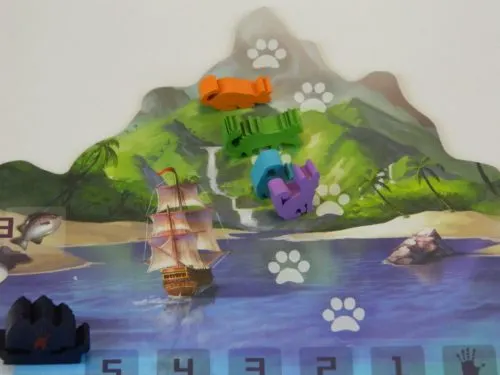
Here is the turn order for the current round. The orange player will get to take the first cat tile followed by green, then blue, and then purple. After each player has had a chance to take a cat, the orange player can take a second cat and so on.
Then beginning with the start player, the players will take turns rescuing cats from the island. Each player has the opportunity to rescue one cat and then the next player will get to rescue a cat. When play gets back to the first player they can choose to rescue another cat. This continues until all of the players pass or all of the cats are taken.
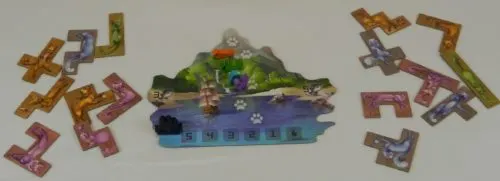
These are the cat tiles that are available for the players to acquire this round. To purchase the cats on the left side players will have to spend three fish. The cats on the right will cost five fish.
To rescue a cat a player needs to meet two requirements. If either of these requirements can’t be met, the player can’t take the cat tile.
First the player has to pay fish to the supply depending on where the chosen cat tile is currently placed. Cats to the left of the island will cost three fish, while cats to the right of the island will cost five fish.
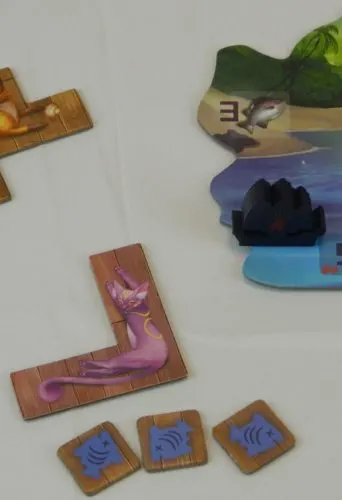
The current player wants to purchase this purple cat. As it was on the left side it will cost three fish.
The player also needs to have a basket in order to place their chosen cat token into. At the beginning of the game each player was given a permanent basket. These baskets can be used once per round. When you use the basket you will flip it over to the other side.
Otherwise most of the rescue cards that you play will feature a basket icon. If the icon features an intact basket, you can discard the card in order to fulfill the basket requirement. If the icon features a broken basket, you can discard two broken basket cards in order to fulfill the basket requirement.
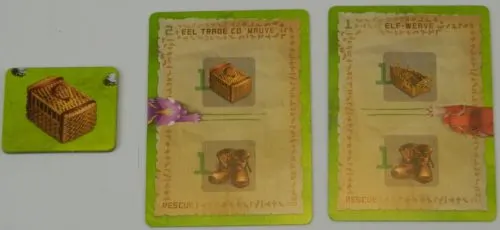
Here are the three different types of baskets. The tile on the left is the permanent basket. The middle card is an intact basket which can be used to acquire one cat. The card on the right is a broken basket. In order to acquire a cat, you will have to have two of these cards.
Once a player has rescued a cat, they will have to immediately place it on their boat. To place a tile on your boat, see the Tile Placement section above.
Finding Treasure
After everyone is done with rescuing cats, players will move onto finding treasure. The cards used in this phase either feature brown (Oshax) or yellow (treasure) borders.
Starting with the first player each player can play one of these two types of cards. Each player can only play one card at a time and then the next player can play a card. Once play gets back to the first player they can play a second card. This will continue until all of the players pass.
If a player plays a treasure card, they will follow the directions on the card and place the corresponding treasure(s) on their boat.
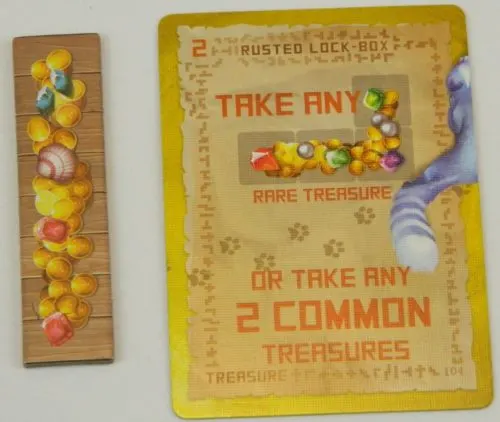
This player played a treasure card that allows them either to take a rare treasure or two common treasures.
If a player plays a Oshax card, they will choose one of the Oshax cat tiles in the middle of the table. They can place these tiles anywhere on their boat as long as they follow the other tile placement rules. Once you place a Oshax card though you must choose what color it will act as. You will take a wooden cat token of the chosen color and place it on the tile once it is placed. The Oshax cat will act as both a Oshax cat and a cat of the chosen color for the rest of the game.
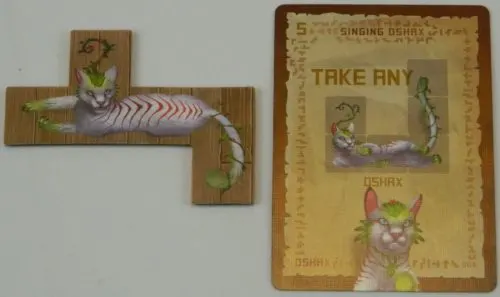
This player had an Oshax card. They turned it in to take the tile on the left. The player will choose a color which this cat will represent for the rest of the game.
Cleanup
This phase is used in order to prepare for the next round.
All of the cat tiles next to the island board that weren’t taken by a player are returned to the box. All treasure tiles will remain under the island board.
The Vesh’s boat token will be moved forward one space on the track. If the boat has reached the hand symbol (last space on the track) the game will enter final scoring.
Each player will flip their permanent baskets to the active side.
Any cards that a player purchased but didn’t use in a round will be kept in a player’s hand for the next round. The player will not have to pay for these cards again. Players will also keep all fish tokens that they didn’t use during the round.
Anytime Cards
The final type of cards in Isle of Cats are anytime cards. These cards always feature a purple border.
These cards can be played at anytime. When a player plays one of these cards its effects will be resolved before the game continues. If two players play one of these cards at the same time, the player higher in turn order gets to play their card first.
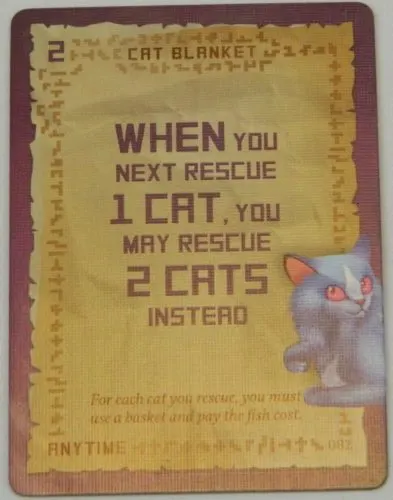
This is an anytime card so it can be played at anytime. When a player plays this card they will be able to acquire two cats instead of one when it is their turn.
End of Game
After the five rounds have been played, the game will move onto final scoring. Players will score points in a number of different ways.
Each rat icon left uncovered on a player’s board will be worth -1 point.
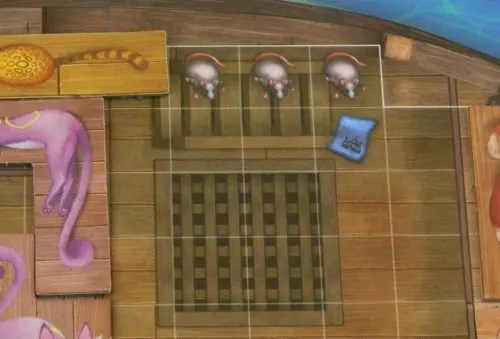
This player did not cover three of the rats on their board. They will lose three points for not covering up these rats.
For each room (see Boats section) that a player doesn’t completely fill in, they will lose five points.
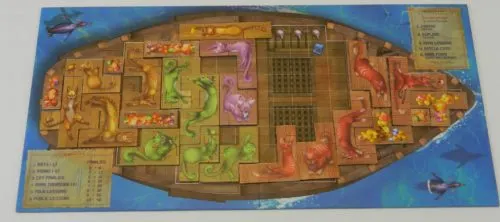
This player didn’t completely fill in one of the rooms. They will lose five points for not filling in the large room.
Players will then find and score the cat families present on their boat. Cat families are groups of three or more cats of the same color that are placed next to one another (does not include cat tiles that touch diagonally). The number of points that a cat family is worth depends on the numbers of cats in it.
- 3 cats – 8 points
- 4 cats – 11 points
- 5 cats – 15 points
- 6 cats – 20 points
- 7 cats – 25 points
- Each cat over seven is worth an additional five points
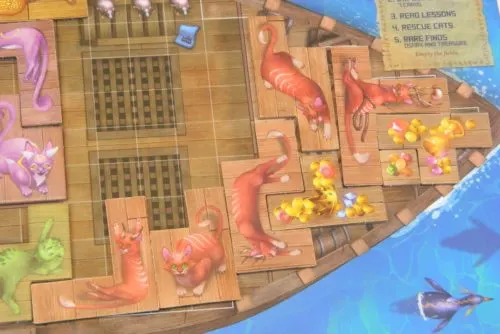
Here is one of the cat families that this player created on their board. As there are five cats in the red family, the cat family will be worth 15 points.
For each rare treasure that a player has in their boat, they will score three points. Common treasure is not worth any points.
Each player will reveal all of the lesson cards that they placed face down during the game. If the player has completed a lesson they will score the corresponding number of points.
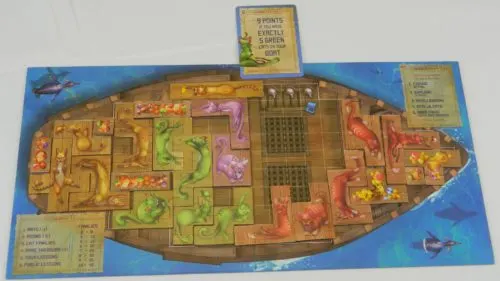
This player ended up getting a lesson card that would score them nine points if they had exactly five green cats on their boat. As this player had exactly five green cats on their boat, they will score nine points from this card.
Finally each player will score points for each public lesson that they completed.
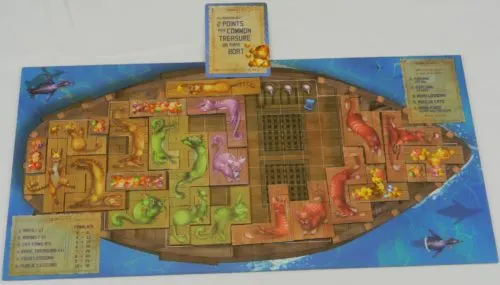
One of the public lesson cards chosen during the game will give all of the players two points for each common treasure on their boat. As this player has five common treasures on their boat, they will score ten points.
The player that scores the most points will win the game. If there is a tie, the tied player with the most fish remaining will win. If there is still a tie, the tied players will share the victory.
My Thoughts on The Isle of Cats
When I first saw The Isle of Cats I have to say that I was a little skeptical. The game is highly regarded and it combines two of my favorite genres. The main reason that I was skeptical was that I just didn’t see how you could combine a tile placement game with a card drafting game, and have the mechanics become anything more than a jumbled mess. Both mechanics on their own are great, but I didn’t really see how they could work together in a game. There was also the fact that I have played around 1,000 different board games, and I can’t recall ever playing a board game that combined these two genres. Despite all of this, The Isle of Cats somehow finds a way to blend these two mechanics into a game that is really satisfying.
I would probably say that the game’s main mechanic involves tile placement. In a lot of ways this part of the game kind of feels like a game of Tetris. In the game you will acquire various tiles in shapes that look like they were taken from a game of Tetris. You then need to place these tiles onto your ship. You will score points in a number of different ways. The main objective is to try and fill in as many of the spaces as possible while also trying to connect cats of the same color.
I will say that the tile placement mechanics in The Isle of Cats are not the most original. This Tetris style of gameplay has been used in quite a few board games over the years. Despite this I really enjoyed this element of the game. I have always been a sucker for good tile placement games, and The Isle of Cats is no different. This element of the game is mostly built around trying to fit the most polyomino shapes onto your gameboard while also trying to create large groups of the same colored cats. There is real skill and strategy to figuring out which tiles to take and where to place them. Anyone who enjoys tile placement games will likely love this aspect of the game.
The other main mechanic in The Isle of Cats is the card drafting elements. At the beginning of each round all of the players will be dealt seven cards. In most board games you would just get stuck with the cards that you were dealt. The catch in card drafting games is that you will only get to keep a number of the cards you were initially dealt. You will get to keep two of the cards and will then have to pass the cards to another player. Therefore each player will get the opportunity to take the cards that they prefer from each set of cards. The players will then choose which of the cards they ended up with that they will pay to keep and which they will just discard.
While I hadn’t played a lot of card drafting games until somewhat recently, the genre has quickly become one of my favorites. I generally enjoy card games, but one of their biggest issues is the fact that some players can be dealt better cards than others. The beauty of card drafting games is that this element of luck is reduced as you can’t keep all of the good cards that you are dealt. If a player is dealt a bunch of good or bad cards, some of those cards will be passed to other players. This ends up evening out some of the luck. As you get to choose what cards that you want to keep, you have the opportunity to form your own strategy based on what cards you ultimately end up taking. Everything that I enjoy about the card drafting genre is emphasized by this mechanic in The Isle of Cats. Like the tile placement mechanics, the card drafting mechanics are similar to quite a few other games from the genre. They do have a few little twists that keep things interesting though.
I think the main reason why The Isle of Cats works as well as it does is that the designer, Frank West, deserves a lot of credit for finding the perfect way of combining these two mechanics together. The tile placement mechanics are mostly responsible for scoring you points at the end of the game, but the card drafting mechanics are where you craft your strategy. There is ultimately quite a few different ways of scoring points in the game. You can score points by placing cats on your boat in order to fill up most of the spaces as well as create large families of the same colored cat. The cards add quite a few other ways of scoring points though. In particular the lesson cards can give you new ways of scoring points that may work counter to other ways of scoring points. Smart use of these scoring opportunities along with the more traditional options can be the difference between winning and losing the game.
Much of the strategy in The Isle of Cats is based around the fact that there isn’t enough time to do everything that you want. There are only five rounds in the game, and you can only take so many actions each turn due to your supply of fish. Therefore you need to pick and choose what areas you are going to focus on, and which areas you are going to ignore. You could go with a strategy where you mostly focus on rescuing cats to fill up your boat scoring points for cat families and reducing the amount of points you lose. Otherwise you could focus on scoring points from various lesson cards. I always appreciate a game that allows players to score points in a number of different ways. I haven’t played the game enough to know if there is a go to strategy, but it feels like you can craft quite a few winning strategies in the game. My one recommendation is that you somewhat focus your strategy, since if you try to do too many things you likely won’t maximize your score in any of them.
Heading into The Isle of Cats I didn’t know exactly what to expect from the game as far as difficulty was concerned. Reading through the rules and explaining it to new players, the game can seem a little overwhelming. This is mostly due to the number of different mechanics in the game. It takes some time to explain the various phases, different types of cards, and ways of scoring points. For new players’ first couple of rounds, they may not know exactly what they are supposed to do. Like all good games though, The Isle of Cats becomes pretty easy to play after a while. After a couple of rounds you will easily remember what you are supposed to do and players should then have no troubles playing the game. Ultimately I would say that The Isle of Cats is more difficult than your typical mainstream game, but it still shouldn’t be that hard to teach.
To make the game a little more accessible to children and those who don’t play a lot of board games, The Isle of Cats actually includes a variant family game. Basically the family game takes the main game and strips out most of the card drafting mechanics. You mostly just take turns taking cat tiles and adding them to your boat. While I didn’t play this mode, I personally wouldn’t recommend it unless the basic game is too complex for your group. I mostly say this because without the card drafting mechanics, The Isle of Cats is just another tile placement game. It should still be fun, but the combination of the two mechanics is really what makes the game.
While I wouldn’t say that it was much of a selling point to me personally, most people will probably initially be intrigued by the game’s cat theme. For the most part I would say that the cat theme is kind of hit and miss. On the positive side the game’s components are great. The components are of a high quality and the artwork really helps sell the game. The game even tries to weave a story of your days on the island throughout the rulebook. I never really got into the theme though. That is probably partially due to the fact that I am not really a cat person. I just felt like the theme didn’t really bring anything unique to the game. I honestly think you could have changed the theme to a number of different things, and it wouldn’t have really impacted the game in any meaningful way.
The Isle of Cats is a great game but it does have a couple of issues.
I would say that the biggest issue comes from the fact that the game has a sort of runaway leader problem. You might not know it due to the hidden lesson cards, but there are games where one player will create such an insurmountable lead where none of the other players will be able to catch up. I attribute a lot of this due to certain card combinations that are almost unstoppable. Some of the lesson cards just feed off one another where they both magnify each other’s strengths while minimizing their weaknesses. If you get one of these combinations between your private and public lessons you will be hard to beat if you capitalize on them. In some situations players can try to hinder these scoring opportunities if they know what cards another player has. Players may have no idea what lesson cards a player has though.
Adding to this is the fact that there is some luck to the game. The card drafting mechanic alone eliminates a lot of the luck you would get from a traditional card game as you only get to keep some of the cards that are dealt to you. It doesn’t quite eliminate all of the luck though. If a player is dealt some of the most powerful cards in the game, they will take them without giving the other players a chance at them. Luck also comes in being dealt the cards that you need for your current strategy. Players who are dealt lesson cards that already work with their current strategy can score easy points. Otherwise if you don’t have the cards that you need for your strategy, you are basically out of luck.
The final issue with The Isle of Cats has to deal with the potential for analysis paralysis. This problem is not nearly as bad as some other games, but it can still crop up from time to time. There are points in the game where there is a lot to consider from what cards you should take to what tiles you should add to your boat. These decisions can make or break your game which means you need to take your time to make sure you make the right decision. Players that have to make sure they always choose the best moves will want to analyze every possible choice in order to make sure they made the best choice. This can make the game drag a little from time to time. To fully enjoy the game players need to be willing to make moves at a reasonable pace even if they might not always make the optimal move.
Should You Buy The Isle of Cats?
I have to say that I was a little skeptical when I heard of the premise of The Isle of Cats. Tile placement and card drafting are two of my favorite types of games. They are just so different though that I never thought they could be combined into a cohesive game and still work well. Well it turns out that The Isle of Cats succeeds in this task as it found the perfect way of balancing these two mechanics. On their own these two mechanics are pretty similar to your typical games from their genres. They are both enjoyable on their own, but what really makes the game is the combination of the two mechanics. The two mechanics actually feed off of one another to create a game with quite a bit of strategy and a unique gameplay experience. The game takes a little while to adjust to, but once you become familiar with the mechanics it is actually pretty easy to play. The components are fantastic even though the theme is nothing special. The biggest issues I had with the game is that some of the card combinations seem overpowered which lets luck play a bigger role in the game that it probably should have.
I really enjoyed The Isle of Cats and would recommend it to most people. If you hate tile placement and card drafting games it may not be for you. If the game sounds at all interesting to you though, you likely will really enjoy The Isle of Cats and should consider picking it up.
Buy The Isle of Cats online: Amazon, eBay
. Any purchases made through these links (including other products) help keep Geeky Hobbies running. Thank you for your support.

